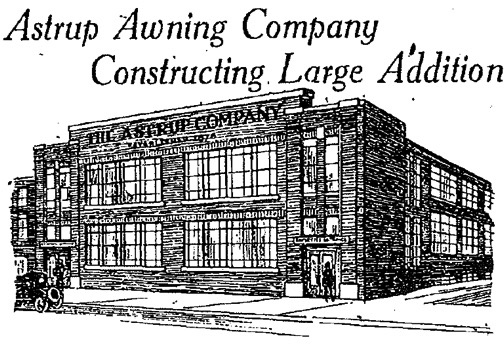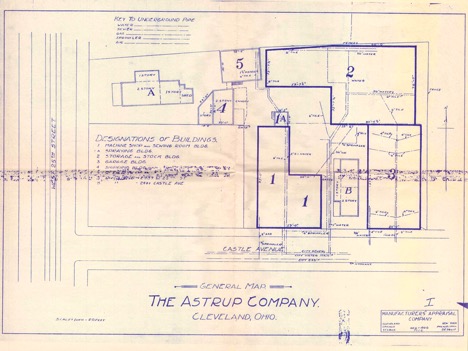
Cleveland’s Astrup Company Listed on the National Register
Over the last year, the Designing Local team has worked on writing a National Register Nomination for the Astrup CompanyBuilding located on the south side of Cleveland, Park Service approved the nomination and the building was listed on the National Register (SG100002875).
A little history…
The Astrup Manufacturing company began as a small sail-making company for Lake Erie commerce by Danish immigrant William James Otto Astrup in 1876. By the turn of the century the company, like others in the area, began to transition from sail-making to awning manufacturing, in part due to the ease of repurposing the main component of both products: canvas. The Astrup Manufacturing Company moved to its current location at 1114 Pearl Street, now West 25th Street, in 1882, at first operating out of the old inn and barn on the property. After a series of fires the main, industrial-style building standing today was constructed between 1919 and 1926.
During World War II the Astrup Company was one of just three wning companies in the country which succeeded in making large enough quality canvases for airplane hangars which aided Allied success in the air warfare campaign. By 1956 the Astrup Company was the largest awning manufacturer and distributer in the country, having secured over 30 U.S. patents including the first patent for a universal hardware design used to attach awnings to buildings. The Astrup Company expanded throughout the world, with offices throughout the United States and into Canada and Mexico. Dark Green Astrup Awnings even decorated the United States Embassy in Moscow, Russia.
The Astrup Company was the continuously owned and operated by direct descendants of James Otto Astrup for over a century, until it’s sale to long-term business partner, Glen Raven. in 2007 when it was renamed to TriVantage.
The property at 2437 West 25th Street is the last surviving physical representation of the Astrup Company’s success and influence in Cleveland during the city’s time of commercial and industrial prosperity. The Astrup Company began as a small business operated out of the founder’s home and grew to become a global leader and innovator in the awning and awning hardware business. The adaptability of the Astrup Company is evidenced by its transition from sail making to architectural awnings to umbrellas and backpacks as commercial demands evolved, when similar companies failed. It accommodated the highs and low of demand, and even stepped up to be a significant factor for the United States government in World War II.
The current owner of the Astrup Company building plans to secure state and federal tax credits in order to move forward with preserving and redeveloping the building and site.

